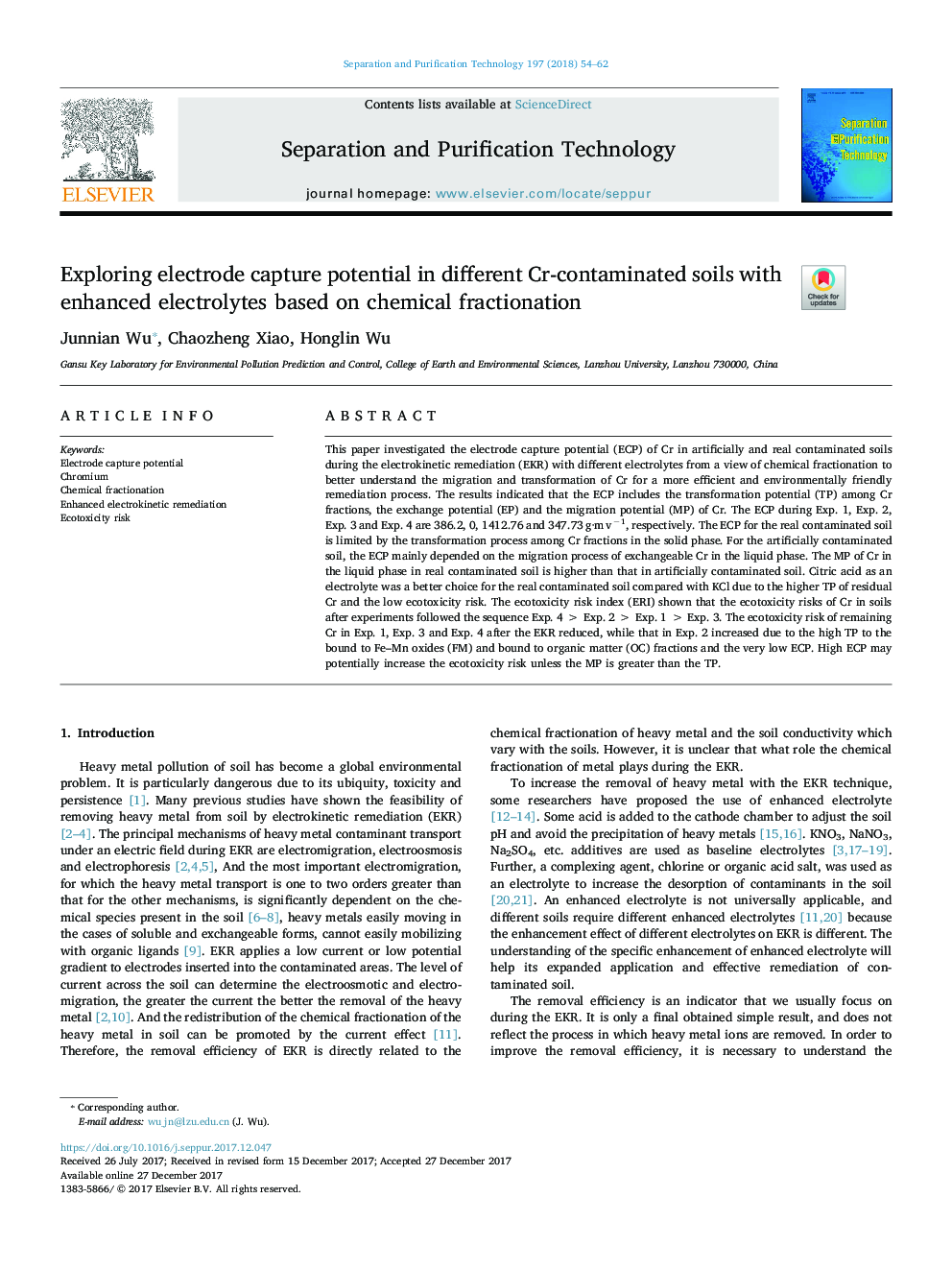| Article ID | Journal | Published Year | Pages | File Type |
|---|---|---|---|---|
| 7043902 | Separation and Purification Technology | 2018 | 9 Pages |
Abstract
This paper investigated the electrode capture potential (ECP) of Cr in artificially and real contaminated soils during the electrokinetic remediation (EKR) with different electrolytes from a view of chemical fractionation to better understand the migration and transformation of Cr for a more efficient and environmentally friendly remediation process. The results indicated that the ECP includes the transformation potential (TP) among Cr fractions, the exchange potential (EP) and the migration potential (MP) of Cr. The ECP during Exp. 1, Exp. 2, Exp. 3 and Exp. 4 are 386.2, 0, 1412.76 and 347.73â¯g·mâ¯vâ1, respectively. The ECP for the real contaminated soil is limited by the transformation process among Cr fractions in the solid phase. For the artificially contaminated soil, the ECP mainly depended on the migration process of exchangeable Cr in the liquid phase. The MP of Cr in the liquid phase in real contaminated soil is higher than that in artificially contaminated soil. Citric acid as an electrolyte was a better choice for the real contaminated soil compared with KCl due to the higher TP of residual Cr and the low ecotoxicity risk. The ecotoxicity risk index (ERI) shown that the ecotoxicity risks of Cr in soils after experiments followed the sequence Exp. 4â¯>â¯Exp. 2â¯>â¯Exp. 1â¯>â¯Exp. 3. The ecotoxicity risk of remaining Cr in Exp. 1, Exp. 3 and Exp. 4 after the EKR reduced, while that in Exp. 2 increased due to the high TP to the bound to Fe-Mn oxides (FM) and bound to organic matter (OC) fractions and the very low ECP. High ECP may potentially increase the ecotoxicity risk unless the MP is greater than the TP.
Keywords
Related Topics
Physical Sciences and Engineering
Chemical Engineering
Filtration and Separation
Authors
Junnian Wu, Chaozheng Xiao, Honglin Wu,
